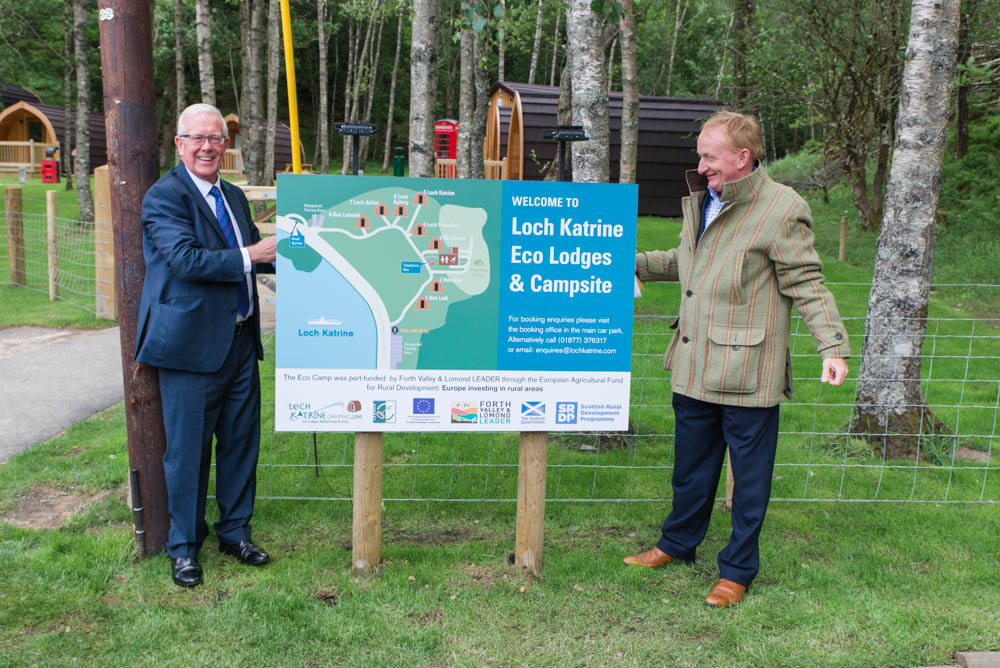
Yesterday I was invited to the official opening of a new campsite at the head of Loch Katrine by James Fraser, whom I know through the Scottish Campaign for National Parks, but was unable to attend. I had visited the site twice during construction and believe there are lessons here about what can be achieved, given the will, for both the Loch Lomond and Trossachs National Park Authority and politicians more widely.
The creation of the eco-lodges – they are fully insulated and were well used during the coldest period last winter – and campsite has been done without funding or assistance, apart from the Planning Application, from the LLTNPA. The focus of the LLTNPA has been on trying to enforce the byelaws and provision of a few camping places within the camping management zones as “compensation” rather than the wider picture.
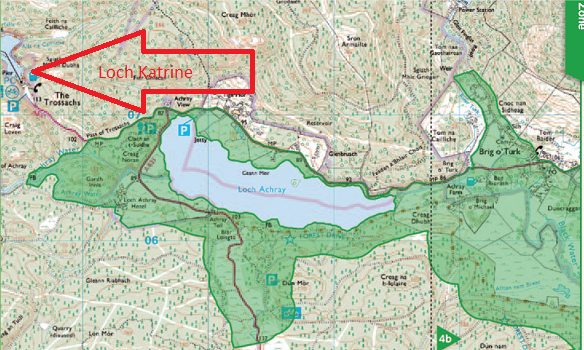
Loch Katrine is the only major freshwater loch within the Loch Lomond and Trossachs National Park not to be affected by the camping byelaws. Both its east and west end, however, lie less than a kilometre beyond the camping management zones. As a consequence there was an obvious risk of campers being displaced and, rather than waiting to see what happened, the Steamship Sir Walter Scott Trust, which manages the ground at the east end of Loch Katrine, decided to prepare. It also saw an opportunity to generate new sources of income which would help it maintain the historic steamship, the Sir Walter Scott – a very expensive business – and provide year round jobs to its workforce.


With the advice of its trustee, James Fraser, who now acts as part time Chief Executive of the Trust, it set about raising funds and two years has created its “eco-camp” out of nothing. This is despite considerable challenges.
The site sits within the Trossachs Woodlands Special Area of Conservation, and so, one might have thought, the last place for a new development. Actually, the site is flat because it was used to dump spoil from the construction of the Loch Katrine reservoir, has very shallow soils (see photo above) and had only been colonised by birch.
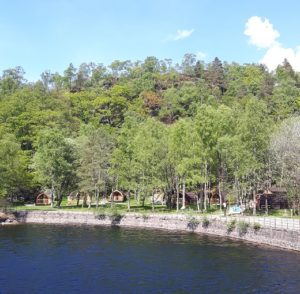
While the planners were right to allow a campsite here they unfortunately decided:
6.Erection of Fence: Prior to the use of the site as a camp site, a 1 metre high post and wire fence shall be installed along the north and eastern boundary of the site, details of the exact height, style and location of which shall be submitted to and agreed in writing with the Planning Authority.
REASON: To restrict access into the adjoining woodland to minimise the disturbance and degradation of the Trossachs Woods Special Area of Conservation.
There we have it again, the National Park sees people in the form of visitors, rather than land management practices, as being the major threat to conservation. SNH rightly promotes the message that unless people are able to enjoy nature, there will be no-one who cares enough to protect it, but our National Park does the opposite. They would have been better requiring the Steamship Trust to create a new path to allow more people to enjoy the woods.
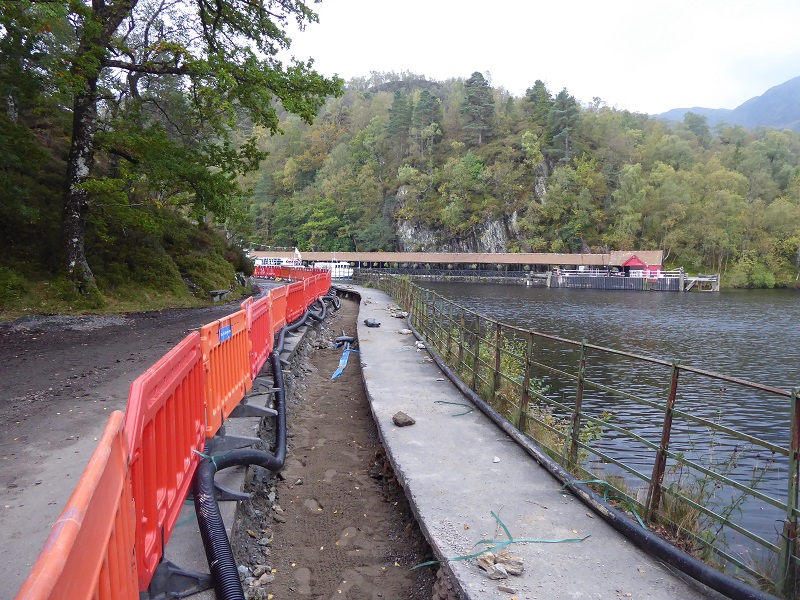
The other major hurdle in the creation of the campsite – and rightly so – was the protection of the Loch Katrine reservoir, which supplies water to Glasgow. The most expensive part of the construction was connecting the campsite to mains services. The Trust however also incurred additional costs one would not expect for a normal campsite e.g they have been required to install a back-up generator in case the mains power supply fails as a safeguard against pollution.

The “Eco-camp” is of course very different from the basic campsites, which provide a wilder experience, which the LLTNPA is trying to deliver. It has not just toilets but showers, a communal covered area for campers and camping pods and is not aiming to provide “basic” camping facilities. All those facilities should add time and expense but despite this the Trust has delivered the new campsite far more quickly that the LLTNPA has managed to do to date and, I understand from James Fraser, for significantly less money.
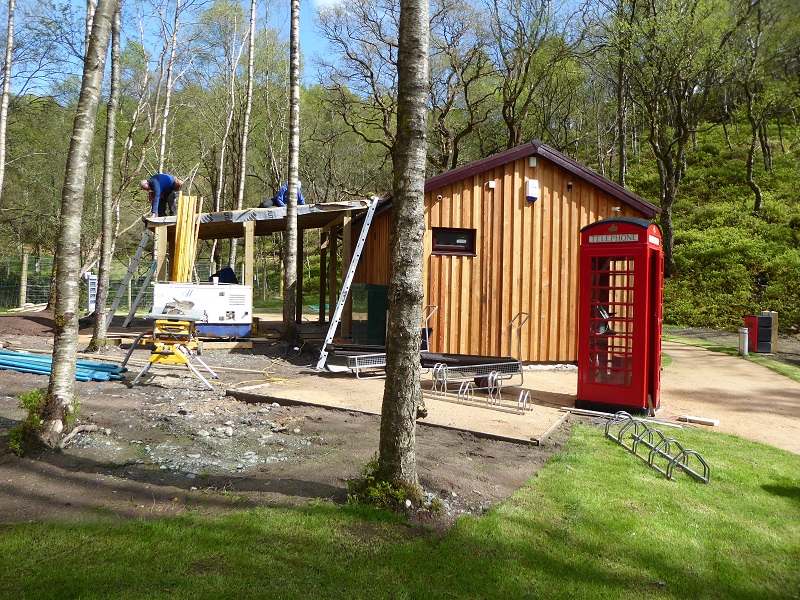
The LLTNPA campsite at Loch Achray was supposed to open three months ago while the saga of the failed water supply at Loch Chon (see here) has continued into this year and the campsite there appears to have cost significantly more than the £345k originally budgeted. There are lessons here for the LLTNPA and their Board Members would be well advised to spend some time talking to the Trust HOW they managed to do what they have done. I suspect some of the answer lies in the Trust employing local businesses which have a real interest in ensuring the site is a success.
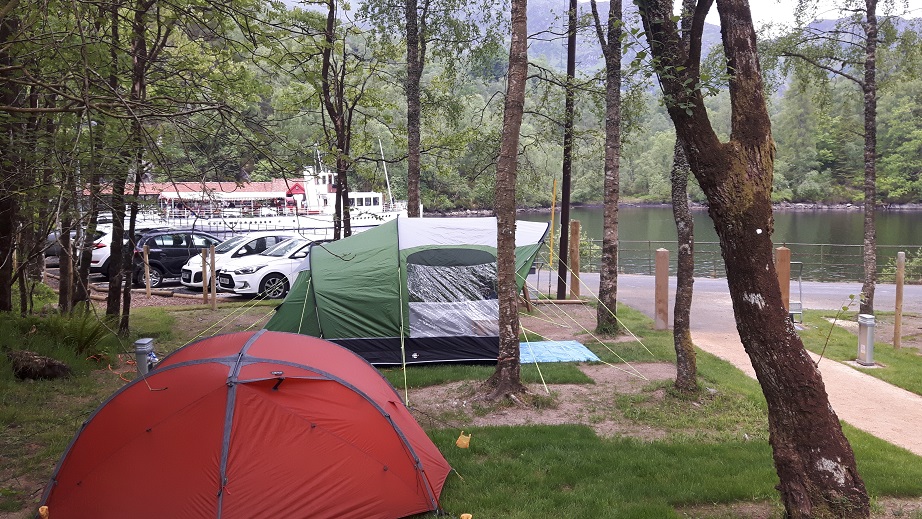
While the demand for glamping appears on the increase (see here for very recent Telegraph article) and the camping pods have been almost fully booked since they opened earlier this year, the Trust has have been very keen to provide for traditional campers. It was James Fraser who first alerted me to the fact that over 1000 camping places in the National Park have been lost over the last 25 years and many of these since the LLTNPA came into existence, a consequence of the National Park as Planning Authority agreeing to the conversion of campsites in luxury holiday lodges and the like (e.g at Ardgarten). While the 8 camping pitches only make a small contribution to reversing this, the Loch Katrine eco-camp is the only example of the “private” creation of a new campsite since the camping byelaws came into effect, despite the LLTNPA’s declaration to Scottish Ministers that it wanted landowners to provide more camping facilities.

The Trust though has a wider vision part of which is to create a similar facility at the west end of Loch Katrine. This would help re-create some of the historic tourist routes through the Trossachs which are well described in the Trust’s Eco Camp Official Opening News Release. The opportunity here is to provide a network of small camping places along the network of paths, many underused at present, in Strath Ard and Strath Gartney and stretching all the way from Callender and Aberfoyle in the east to Loch Lomond in the west. This would enable people to do mini walking, cycling or even canoe tours.
The Steamship Trust is already leading the way on this and, instead of just providing tourist cruises, on the first May holiday weekend transported dozens of bikes down Loch Katrine to enable people to enjoy the bike back along its north shore. The provision of this type infrastructure and service to support outdoor recreation should be central to the LLTNPA’s consultation on their new Outdoor Recreation Plan which is due later this year.
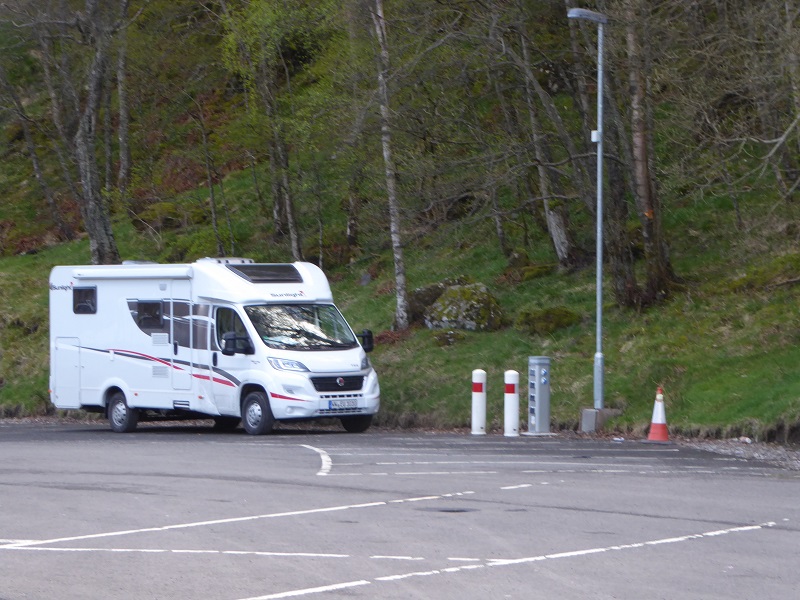
The Trust, like everyone else, also expected the camping byelaws to apply to campervans and caravans (see here) and anticipated that as a consequence campervans would be displaced from the camping management zones. Unlike the LLTNPA (see here) it decided to plan for this and install some facilities for campervans in its main car park.
With the collapse of the byelaws against campervans, the Trust has been forced to reconsider its plans. Instead of being forced to stay in places such as this, as the LLTNPA intended, they now need to be attracted. Because of this the Trust has suspended its plans for a chemical disposal point – these are expensive to empty – as being too great a financial risk. It has however gone ahead with the creation of a shower in the toilet block – as a result of research which revealed that there was a high demand from campervanners for such facilities and they would pay to stay where such facilities were on offer. It seems to be working.
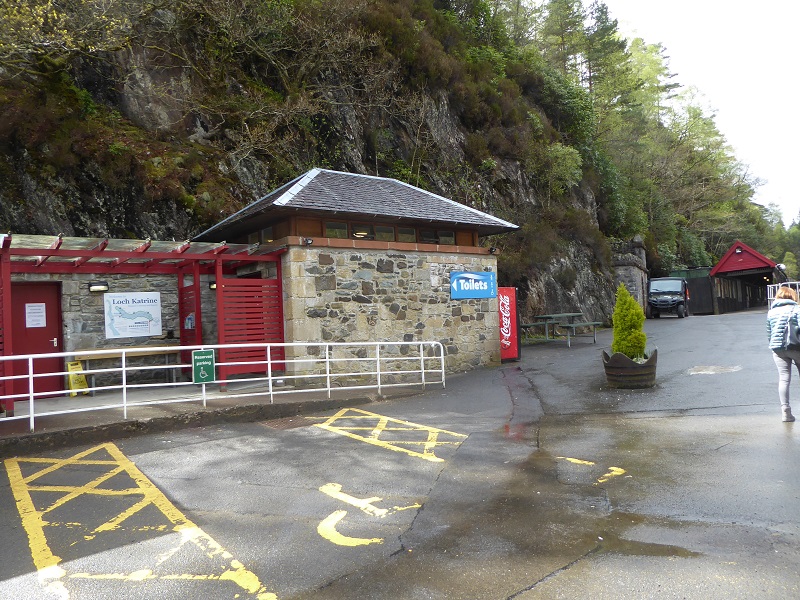
The Trust has also created additional reasons for both campervanners and campers to stay here. Discounts on cruises, but also opening its cafe in the evenings – a great idea as many campers and campervanners occasionally want to enjoy a meal out and a drink without having to drive off somewhere afterwards.
Lessons from Loch Katrine
The contrast between what the Trust has been doing at Loch Katrine and the LLTNPA’s pre-occupation with trying to enforce byelaws is striking. While the Trust has been developing recreational infrastructure to enable people to enjoy the Trossachs, the LLTNPA has been wasting scarce resources trying to chase people away (while claiming to Scottish Ministers at the same time that there is no evidence of any displacement of campers).
One wonders whether Bruce Crawford, the local MSP, who has been extremely supportive of the Trust and what they have been trying to do, noted the contrast between the provision for campers and campervanners at Loch Katrine with what the Forestry Commission have provided at Three Lochs Drive just a few kilometres away? Despite the ongoing creation of the new campsite there on the shore of Loch Achray, there are still no facilities of any type there for campervans while many of the camping and campervan permit areas off a dire recreational experience (and will be subject of a forthcoming post).
One wonders too if Mike Cantley, the new chair of SNH and previous convener of the LLTNPA – before the disastrous plan to extend the camping byelaws – pondered the implications of the eco-camp and wondered how SNH could use its resources and influence to make more things like this happen?
The development of facilities at Loch Katrine is far from being the only type of recreational infrastructure which is needed in the National Park but it does show the way forward. Were the LLTNPA and Forestry Commission Scotland to focus their resources on provision of infrastructure to support outdoor recreation rather than trying to enforce the unenforceable byelaws it, that would address many of the problems which have been caused by the reduction in camping places and other public facilities in the National Park (closed toilets etc). It would also create local jobs and allow the Ranger Service to act as rangers, not as quasi police force.
The task of tackling anti-social behaviour could then be returned to the hands of the Police, where it should always have belonged, and the expensive and ineffective byelaws dropped.

Excellent article Nick — having visited the Loch a few times whilst it was developing the infrastructure, and having used the on-site facilities etc. whilst camping with my motorhome, I can confirm that, when you provide even basic facilities (like electric hookup and fresh water – and usually a waste disposal point) then motorhome and campervan owners will stay and spend money. In the rest of Europe these sorts of facilities are commonly called “aires” (not to be mixed up with motorway service stations that can also sometimes be given that title). There are more than 3,500 in France alone! In Scotland there are barely more than two or three – including Loch Katrine. Unlike camping in tents, we don’t need to rely on camping site facilities – so these sorts of “stopover” facilities then encourage a slightly longer stay than just overnight can be very popular.
I appreciate that the LLTNPA will not make money directly from aires, but they are a great way to help meet their strategic aims, and also attract more spending into the region in the process. Motorhomes and campervans are not cheap – new ones start from around £50,000 – so its always worthwhile trying to attract them if you’re interested in maximising the economic benefits of tourism.
The Loch Katrine development is to be applauded for its multi-use strategy to encourage visitors.
An excellent development inspired and effectively delivered by James Fraser. Good to see the support being given by Mike Cantley, chair of SNH and Bruce Crawford, local MSP. But will they be able to persuade their colleagues that this is the way forward for the national park? Public money is far better spent on initiatives like this than wasted on crazy camping byelaws and the quasi police force pretending to be a ranger service.
The Loch Katrine Eco Camp has been sympathetically built to blend in with the breathtaking surroundings and provides an excellent opportunity to re-connect with nature in the heart of Scotland’s first National Park. Congratulations to all concerned.